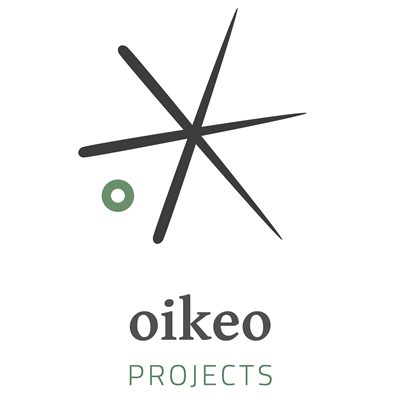

13.12.2012
Eine wunderschöne gut ausgebaute und doch nur schwach befahrene Küstenstrasse bringt uns weiter südlich von Hué in Richtung Hoi An. In der Altstadt von Hoi An, deren Name nicht umsonst übersetzt „friedvoller Versammlungsort“ heisst, scheint die Zeit still zu stehen. Schöne, den Flusslauf säumende koloniale Architektur, ein lebendiger Marktplatz und jede Menge hervorragende Patisserien sind eine gute Kombination um hier ein paar Tage zu bleiben.
Wir verlassen Hué über eine vorgelagerte ca. 20km lange Sandinsel. Fischerdörfer und Felder wechseln sich ab und vermitteln ein authentisches Bild von Vietnams Küste. Der Hauptverkehr mit den grossen und schweren Lastwagen verschwindet kurz nach der Insel in einem Tunnel, zurück bleibt eine sich charmant an die Hügel anschmiegende Küstenstrasse, praktisch nur für uns. Das ist eine Motorradstrecke in Perfektion.
Am frühen Nachmittag erreichen wir bereits Hoi An. Die Stadt, früher mal ein wichtiger Hafen, liegt ca. 5km einen Flusslauf hoch von der Küste entfernt. An einem Seitenarm des Flusses liegt die Altstadt mit gut erhaltenen, in französisch-kolonialen Baustil gebauten Häusern. Eine Brücke, von den Japanern Ende 16. Jh. gebaut, ist ein wahres Schmuckstück. Die Schönheiten dieser Stadt teilt man sich mit verhältnismässig vielen anderen Touristen. In den meisten Altstadthäusern befinden sich heute Guesthouses, Cafés und Restaurants. Auch gibt es hier etwa 200 Schneiderateliers, die jede Menge schöner Kleider verkaufen. Besonders Produkte aus Seide sind hier traditionellerweise eine beliebte Verkaufsware, denn Hoi An war einst ein wichtiger Hafen der Seidenstrasse: so werden hier auch heute noch Kleider, Schuhe, Lampions, Taschen etc. aus Seide verkauft. Auf dem Markt bieten Verkäuferinnen und Verkäufer Früchte, Gemüse, Fische und Fleisch feil. Taffe Verhandlungen über den Preis gehören hier dazu.
Das Wetter kann hier relativ schnell umschlagen. So ist es am ersten Tag schwül heiss, am zweiten regnet es praktisch den ganzen Tag und am dritten Tag beides abwechslungsweise. Wenn es hier regnet, sehen die Tröpfchen aus wie Staub, viel kleiner als man es sonst kennt. Man wird jedoch doch relativ schnell nass. Der Fluss schwillt ob den Wassermassen schnell und stark an, so dass er die unterste Strasse der Altstadt am Mittwoch überflutet. Die Leute hier nehmen das jedoch gelassen - am nächsten Morgen zieht sich das Wasser auch wieder zurück und alles ist zurück beim alten. Wir verbringen schöne Stunden schlicht durch die Strassen schlendernd, Häuser betrachtend, Leute beobachtend und natürlich ab und zu mal ein Kaffee und ein Pain au Chocolat geniessend.
Nach diesem eher touristischeren Städtchen zieht es uns wieder ins Hinterland. Hier in der südlicheren Hälfte von Vietnam ist das Land ein wenig breiter, entsprechend gibt es auch mehrere Strassen, die Nord-Süd verlaufen und als Alternative zum Highway 1 wohl eine gute Ausweichmöglichkeit sind. Auf der Fahrt nach Hoi An sind wir den 5‘000. km gefahren - so quasi Jubiläum!
A beautiful, well-developed coastal road with only few traffic takes us further south from Hué towards Hoi An. Time seems to stand still in Hoi An's old town, whose name means "peaceful meeting place" for a reason. Beautiful colonial architecture lining the river, a lively market place and lots of excellent patisseries are a good combination to stay here for a few days.
We leave Hué via an upstream 20km long sand island. Fishing villages and fields alternate and give an authentic picture of Vietnam's coastline. The main traffic with the big and heavy trucks disappears in a tunnel shortly after the island, leaving behind a charming coastal road clinging to the hills, that we have completely to ourselves. This is a perfect motorcycle route.
We reach Hoi An in the early afternoon. The city, formerly an important port, is about 5 km up a river from the coast. On one side of the river is the old town with well-preserved houses built in the French colonial style. A bridge, built by the Japanese at the end of the 16th century, is a real gem. The beauties of this city are shared with a relatively large number of other tourists. Most old town houses are now homes for guesthouses, cafés and restaurants. There are also around 200 tailoring studios here that sell a lot of beautiful clothes. Silk products in particular are traditionally a popular selling item here, because Hoi An used to be an important port on the Silk Road: clothes, shoes, lanterns, bags, etc. made of silk are still sold here today. Sellers sell fruits, vegetables, fish and meat on the market. Tough negotiations about the price are part of this.
The weather can change quite quickly here. So it's muggy hot on the first day, raining practically all day on the second and alternating on the third day. When it rains here, the droplets look like dust, much smaller than you usually know. However, you get wet very quickly. The river swells rapidly because of the water masses, so that it floods the lowest street of the old town on Wednesday. However, people here take it easy - the next morning the water pulls back again and everything is back to normal. We spend nice hours simply strolling through the streets, looking at houses, watching people and of course enjoying a coffee and a pain au chocolat every now and then.
After this more touristy town we are drawn back to the hinterland. Here in the southern half of Vietnam, the country is a little wider, so there are also several roads that run north-south and are probably a good alternative to Highway 1. By the way, on the road to Hoi An we celebrated our 5,000th km driven so far!

